Spain: La Rosaleda to be ready just before 2030 World Cup. Malaga set to move out
source: StadiumDB.com; author: Jakub Ducki
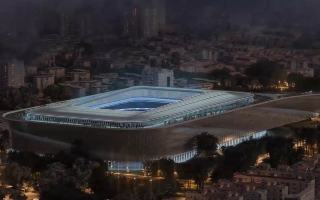 Málaga is entering the decisive phase of preparations for building a stadium for the 2030 World Cup. The new La Rosaleda is expected to hold 45,000 spectators and be ready by the end of 2029. But the city still faces a number of legal, logistical, and financial challenges.
Málaga is entering the decisive phase of preparations for building a stadium for the 2030 World Cup. The new La Rosaleda is expected to hold 45,000 spectators and be ready by the end of 2029. But the city still faces a number of legal, logistical, and financial challenges.
Advertisement
Three institutions, one goal
Hosting the 2030 World Cup is a huge challenge – and just as much pressure. Málaga has been selected as one of the tournament’s potential host cities, prompting the decision to modernise La Rosaleda. Under the current plan, the new venue – dubbed La Nueva Rosaleda
– is to be completed by the end of 2029, one year before the tournament. The project involves a complete overhaul of the current stadium and a major urban redevelopment of the surrounding area.
Three public institutions are jointly responsible for the investment: the Málaga City Council, the Provincial Council (Diputación Provincial), and the Junta de Andalucía. Each is expected to contribute €90 million, totalling €270 million. The formal agreement confirming this commitment is expected to be signed in summer 2025.
Deadline pressure and fast-tracked procedures
Given the complexity and tight deadlines, city authorities have accelerated administrative procedures. The city council declared the La Rosaleda project urgent
and submitted it to a special approval process on the grounds of public interest
under Andalusian urban planning law.
In the coming days, the City Council plans to grant preliminary approval for the detailed zoning plan for the stadium and its surroundings. The documentation will be made available for public consultation, while approvals will also be required from the Directorate General of Civil Aviation and the Junta’s regional water authority, among others.
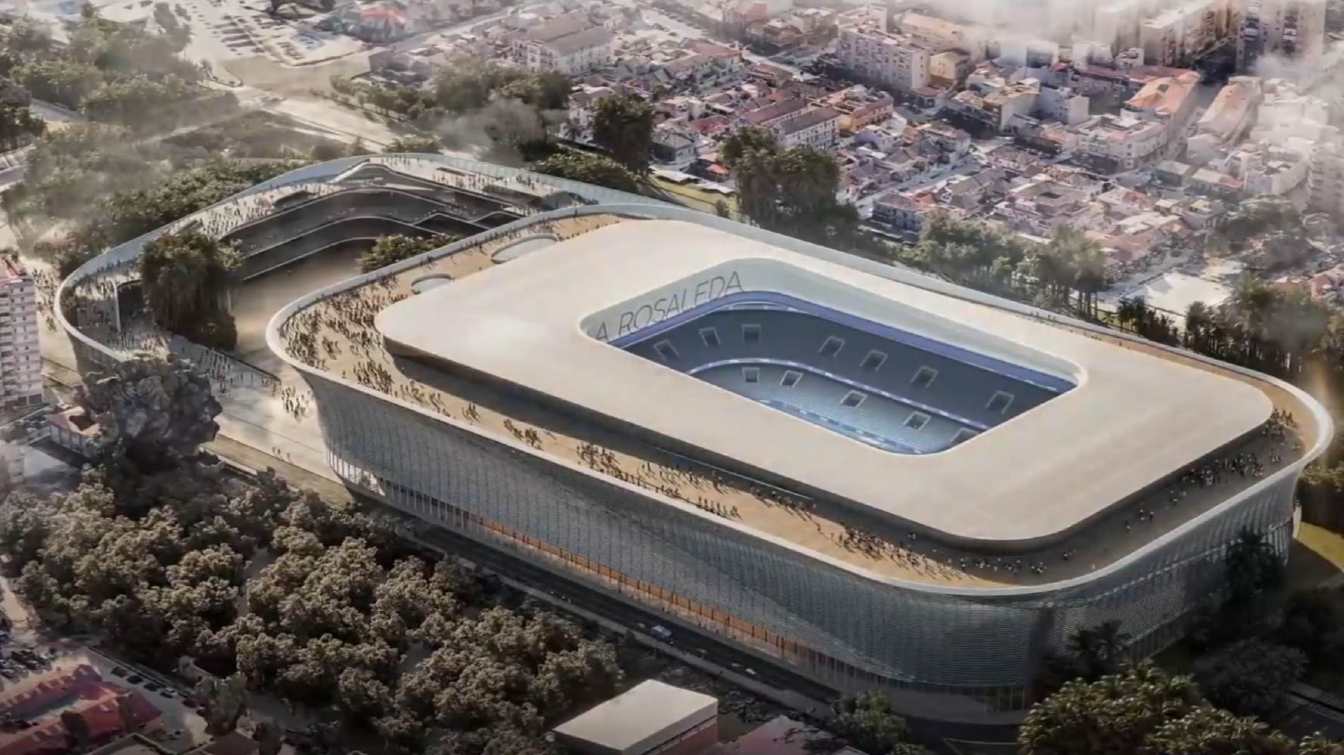 © Junta de Andalucía | Design of Estadio La Rosaleda
© Junta de Andalucía | Design of Estadio La Rosaleda
What will change at stadium?
The architectural design is being handled by Morph Estudio. Their concept calls for increasing the stadium’s capacity from 30,000 to 45,000 seats. To achieve this, a new upper tier will be built, and the entire venue will be adapted to meet FIFA requirements.
One of the main challenges is space: the stadium is bordered by the Guadalmedina River on one side and Palmilla Avenue on the other. To overcome this, the project includes overhanging stands above the river and road, along with emergency bridges on the eastern side. Taller stands will also require reconfiguring nearby streets and sidewalks, as well as shifting parts of Palmilla Avenue.
The expansion will also include commercial and technical spaces – such as the club store, media areas, and player facilities – distributed around the stadium’s perimeter. The existing upper tier will be demolished and replaced with a new structure that meets modern safety and comfort standards.
Temporary move to athletics stadium
Before construction begins, Málaga CF will have to relocate its matches to Estadio Ciudad de Málaga. This temporary move comes with several complications. The current venue holds 7,500 spectators, and expanding it to 26,000 will require complex structural work and new permits.
Borja Vivas, Málaga’s city councillor for sports, confirmed that several scenarios are being considered. The schedule is very tight, there’s no room for delay, but we are on track
he told El Español. If expanding to full capacity proves impossible, a reduced-capacity option will be chosen. In any case, work on La Rosaleda is set to begin in summer 2026, after the end of the football season.
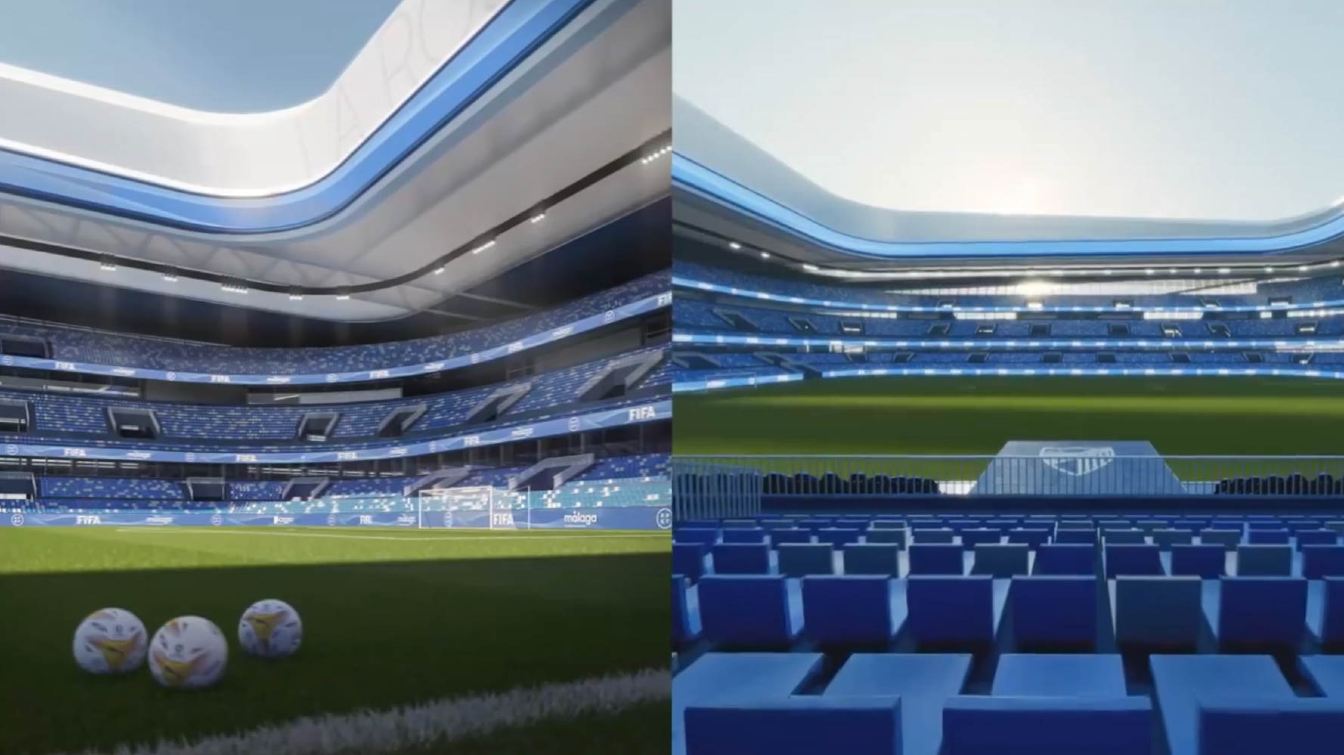 © Junta de Andalucía | Design of Estadio La Rosaleda
© Junta de Andalucía | Design of Estadio La Rosaleda
Concerns over lost club revenue
In an interview with Radio Marca Málaga, Borja Vivas admitted that the temporary move raises concerns over Málaga CF’s revenue. These relate not only to reduced attendance at the smaller stadium but also to the need for investment in training facilities at Ciudad Deportiva de Arraijanal, where the team will train and stay.
We don’t want the club to suffer financially
the councillor stressed. The total cost of upgrading the entire infrastructure – including bridges, roads, stands, and technical facilities – is estimated at €250 to €270 million.
Why not build a new stadium?
Although building a brand-new stadium was initially considered – with possible locations including Puerto de la Torre and the Expo grounds – this option was eventually rejected. Three main reasons were cited: the excessive cost, lack of ready infrastructure, and above all, insufficient time to deliver such a project. The real problem here – and the one that worries us all a little – is the timing
Vivas admitted.
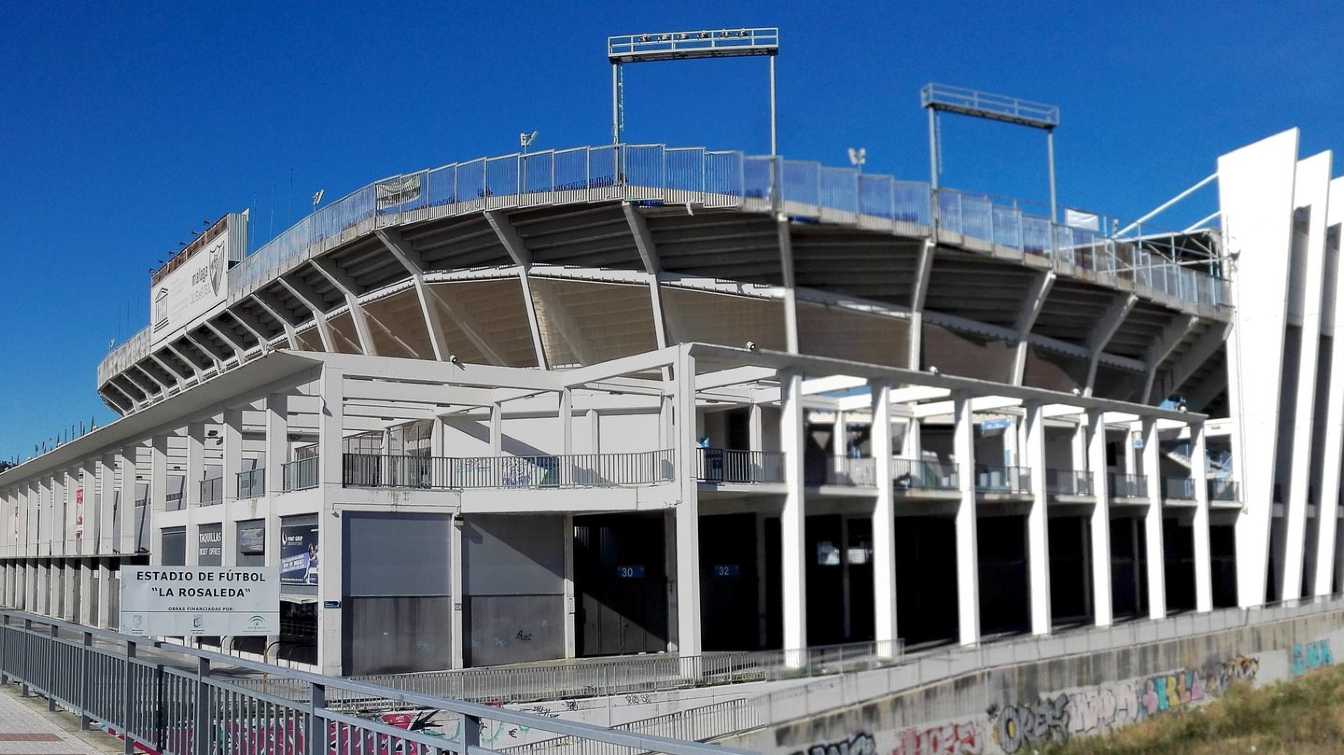 © Fran Guerra | Estadio La Rosaleda
© Fran Guerra | Estadio La Rosaleda
Urban redevelopment and surroundings
The La Nueva Rosaleda project goes beyond the stadium itself. It includes extensive urban redevelopment in the surrounding area: a new bridge plaza over the river, wider sidewalks, an improved road layout, and reorganised space between the stadium and nearby institutions.
The area covered by the works totals over 59,000 square metres. Importantly, the nearby educational institute will remain unaffected by the works – its grounds will stay untouched. The plan also includes sections of Luis Buñuel and Palmilla Avenues, which will be realigned to make room for the stadium expansion.
2030 World Cup and possible Club World Cup
Although the key deadline is the 2030 World Cup, FIFA has suggested that the stadium should be available by the second half of 2029. The reason? A potential Club World Cup, currently held in the U.S., which could be hosted in Spain as a kind of dress rehearsal.
Despite the tight schedule, all three public administrations remain confident and united in their efforts. I want to stay optimistic, because that’s what this is all about – and all three institutions are moving in the same direction
Vivas concluded.
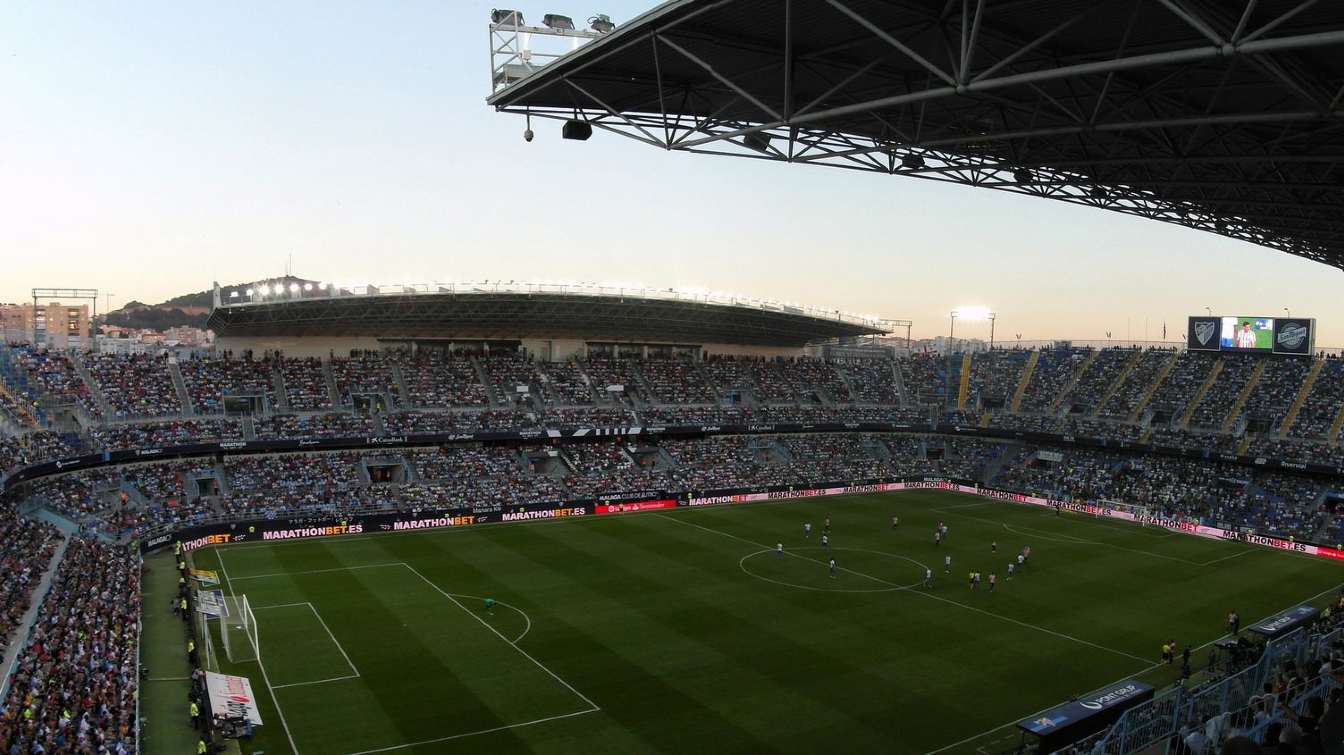 © Fran Guerra | Estadio La Rosaleda
© Fran Guerra | Estadio La Rosaleda
Advertisement
 StadiumDB
StadiumDB